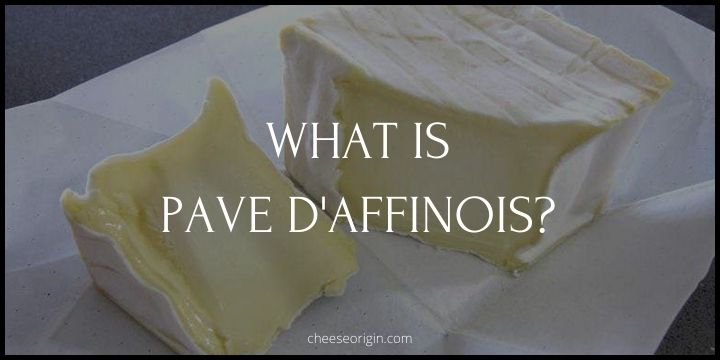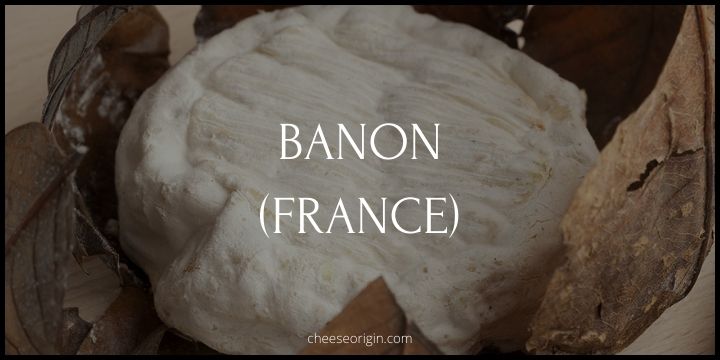What is Neufchâtel? A Creamy Delight from Normandy

Today we travel to the lush green pastures of Normandy, a region known for its rich dairy products and famous apple orchards. It’s here that the story of Neufchâtel unfolds, one of France’s oldest cheeses, dating back to the 6th century.
Neufchâtel is more than just a cheese; it’s a creamy delight that carries with it centuries of tradition, a touch of romance, and a distinctly rich flavor profile.
So get ready, dear cheese lovers, as we delve into the fascinating journey of this lesser-known but equally charming cousin of Camembert – Neufchâtel, a creamy delight from Normandy.
Quick facts about Neufchâtel
| Fact | Details |
|---|---|
| Origin | Normandy, France |
| Type of Milk | Cow’s milk |
| Texture | Soft, creamy, slightly crumbly |
| Flavor | Mild, slightly salty, with a hint of mushroom and nuttiness |
| Shape | Traditionally heart-shaped, but also found in cylinders or bricks |
| Ageing Time | At least 10 days, but can be aged up to 2 months |
| Pairings | Fresh fruit, bread, sparkling wine, or cider |
| Nutrition | High in protein, calcium, and vitamin B12, but also high in fat |
| History | One of the oldest cheeses in France, dating back to the 6th century |
| Use | Can be eaten fresh or used in cooking. Great in salads, sandwiches, or melted on top of dishes |
What is Neufchâtel?
Neufchâtel, a name that may seem quite a tongue twister at first, is one of the oldest cheeses in France, with its origins dating back to the 6th century. This delightful cheese has a rich and storied history that adds an extra layer of intrigue to its creamy goodness.
Hailing from the northern region of Normandy, Neufchâtel is traditionally made from cow’s milk. It’s characterized by its distinctive heart shape, although it can also be found in cylindrical or brick shapes. The heart shape is said to have originated during the Hundred Years War when French girls fell in love with English soldiers and started making heart-shaped cheese as a token of their affection.
Neufchâtel is a soft cheese, similar in texture to Camembert, but with a slightly grainier consistency. It has a delicate, nutty flavor with a hint of mushroom. The rind of the cheese is edible and develops a bloomy white mold as it ages, which adds a subtle earthy flavor to the cheese.
This cheese is not just a treat for the taste buds but also a versatile ingredient in the kitchen. It can be used in a variety of dishes, from appetizers to desserts, adding a touch of French sophistication to any meal. So next time you’re looking for an interesting cheese to try, why not give Neufchâtel a whirl? Its unique flavor and romantic history are sure to add a dash of charm to your cheeseboard.
What does Neufchâtel taste like?
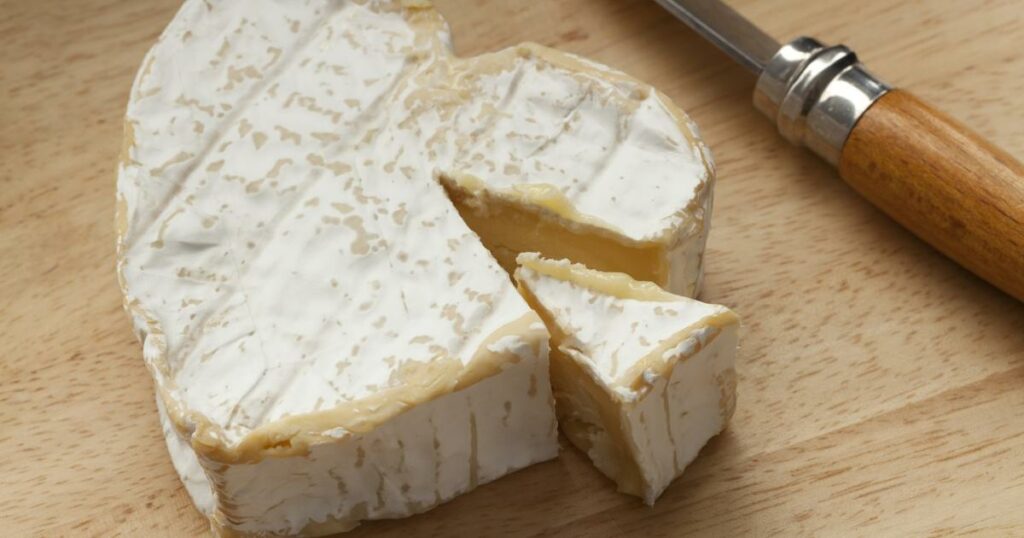
Neufchâtel has a distinct, rich flavor profile. It’s known for its mild, slightly salty taste with a subtle hint of mushroom and nuttiness. The cheese has a creamy and slightly grainy texture that adds to its unique mouthfeel. As it ages, the flavor can become more robust and earthy.
Some people also detect a slight tanginess, which balances out the creaminess beautifully. Its flavor is often compared to Camembert, but Neufchâtel tends to have a slightly saltier and sharper taste.
It’s important to note that the taste of Neufchâtel can vary slightly based on factors such as the diet of the cows whose milk is used to make the cheese, the specific aging process, and the time of year it’s produced.
Neufchâtel tasting notes
- Appearance: Neufchâtel is traditionally heart-shaped, but it can also be found in cylinders or bricks. It has a white, bloomy, and edible rind with a soft, creamy interior.
- Texture: The cheese has a soft and slightly grainy texture. As it matures, it can become denser and creamier.
- Aroma: Neufchâtel has a fresh, milky aroma with a hint of earthiness due to the mold on the rind.
- Taste: Neufchâtel is known for its mild, slightly salty taste. It has a rich and creamy flavor profile with a subtle hint of mushroom and nuttiness. Some people also detect a slight tanginess.
- Aftertaste: The aftertaste of Neufchâtel is typically creamy and lingers with a slight saltiness and a touch of earthiness.
- Pairings: This cheese pairs well with fresh fruit, crusty bread, sparkling wine, or cider. It can also complement various types of charcuterie.
- Use in Cooking: Neufchâtel can be eaten fresh or used in cooking. It melts beautifully, making it a great choice for sauces or melted cheese dishes.
Is Neufchâtel the same as Cream Cheese?
Neufchâtel and cream cheese are similar but not the same. Both are soft, white cheeses, but there are significant differences in their origin, production process, and taste.
| Neufchâtel | Cream Cheese | |
|---|---|---|
| Origin | From the Normandy region of France. | An American product, first made in New York. |
| Production Process | Made from cow’s milk and typically aged for 8-10 weeks. | Made from a mixture of cream and milk, not aged. |
| Texture | Slightly grainy texture with a soft, creamy interior and a white, bloomy, edible rind. | Smooth and spreadable texture, without a rind. |
| Flavor | Rich, creamy flavor with slight tanginess and hints of mushroom and nuttiness. | Mild, sweet, and slightly tangy flavor. |
| Fat Content | Slightly lower in fat compared to cream cheese. | Higher in fat compared to Neufchâtel. |
Neufchâtel:
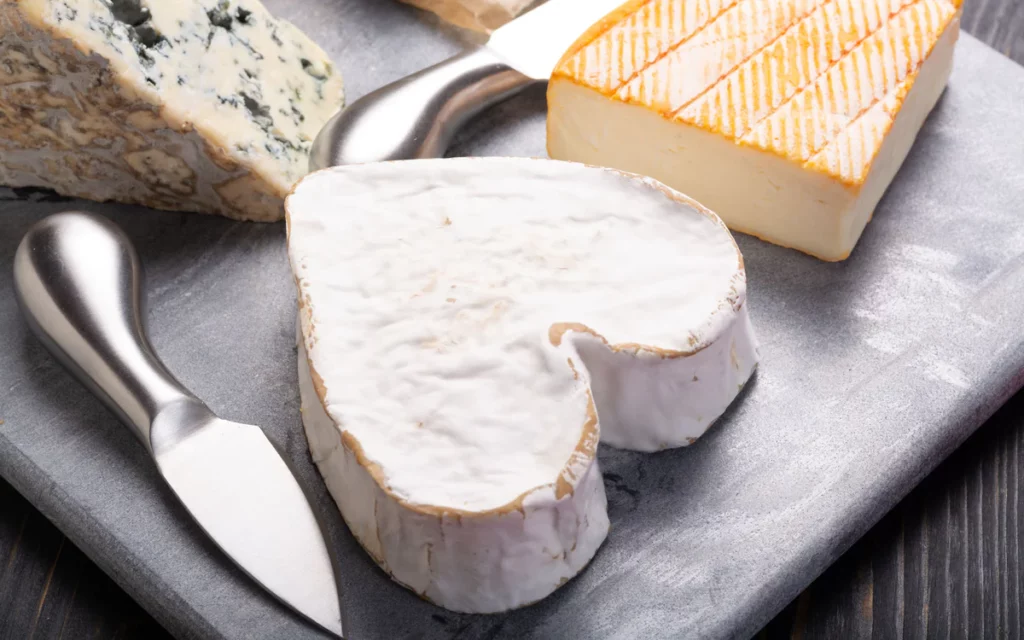
Neufchâtel originates from France, specifically the Normandy region. It’s made from cow’s milk and is typically aged for 8-10 weeks. The cheese has a slightly grainy texture with a soft and creamy interior and is covered with a white, bloomy, and edible rind. It has a rich, creamy flavor with a slight tanginess and hints of mushroom and nuttiness.
Cream Cheese:
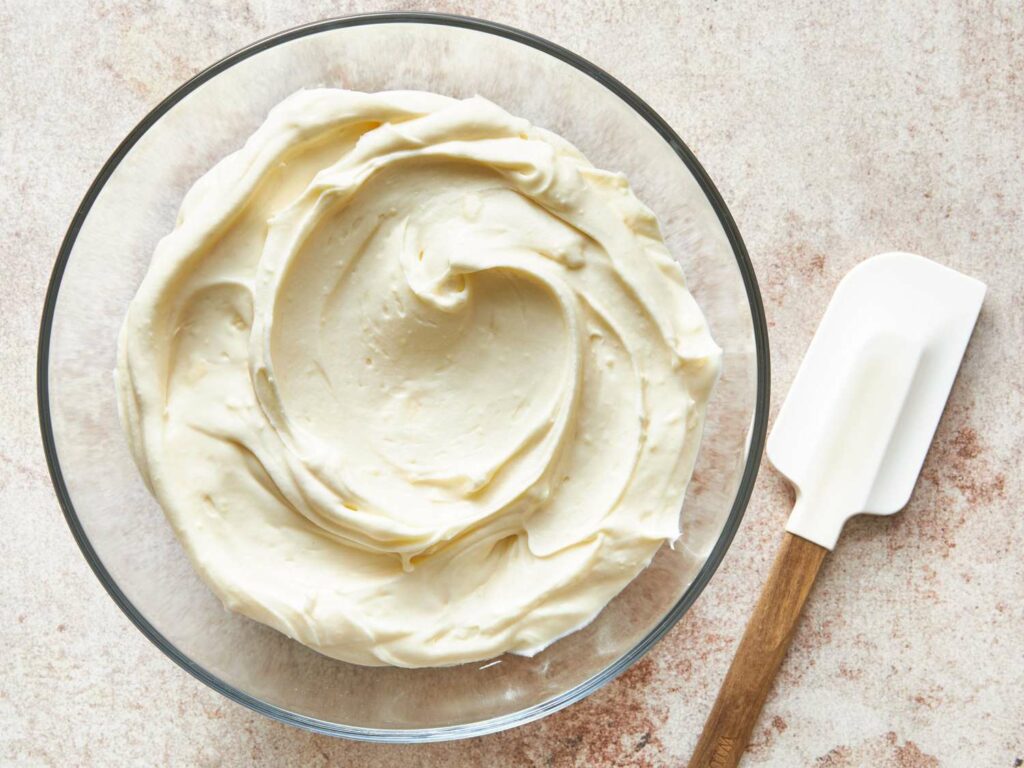
On the other hand, cream cheese is an American product, first made in New York in the 19th century. It’s produced from a mixture of cream and milk. Unlike Neufchâtel, cream cheese isn’t aged and has a smooth, spreadable texture without a rind. Cream cheese has a mild, sweet, and slightly tangy flavor.
In terms of nutrition, Neufchâtel is slightly lower in fat compared to cream cheese.
>> Click here to read our in-depth guide on Cream Cheese
Is Neufchâtel the same as Brie?
Neufchâtel and Brie are both popular French cheeses but they are not the same.
| Neufchâtel | Brie | |
|---|---|---|
| Origin | Originates from the Normandy region of France. | Comes from the Île-de-France region of France. |
| Production Process | Made from cow’s milk and typically aged for 8-10 weeks. | Made from cow’s milk with added cream, which contributes to its creamier texture. |
| Texture | Slightly grainy texture with a soft, creamy interior and a white, bloomy, edible rind. | Creamy and buttery texture, with an edible white, bloomy rind. |
| Flavor | Rich, creamy flavor with slight tanginess and hints of mushroom and nuttiness. | Mild, creamy, and slightly earthy flavor. Some varieties can have a more robust and complex taste. |
| Usage | Can be enjoyed on its own or used in cooking, especially for sauces or melted cheese dishes. | Often eaten on its own, on crackers or bread, or used in a variety of culinary dishes, from appetizers to desserts. |
Neufchâtel, hailing from Normandy, is a slightly grainy cheese with a rich, creamy flavor and hints of mushroom and nuttiness.
On the other hand, Brie, originating from the Île-de-France region, is renowned for its creamy, buttery texture and mild, earthy taste.
Despite both being made from cow’s milk and possessing edible white, bloomy rinds, their production processes differ, with Brie often incorporating added cream.
While these cheeses may share a common nationality, their unique textures, flavors, and production methods set them apart in the world of gastronomy.
>> Click here to read our in-depth guide on Brie
Is Neufchâtel a healthy cheese?
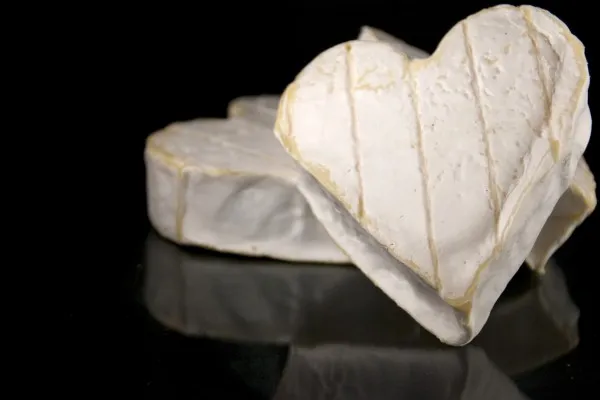
Neufchâtel is considered a relatively healthy cheese option, particularly when compared to similar types of cheese like cream cheese. It offers numerous health benefits and is a good source of essential nutrients.
Firstly, Neufchâtel is beneficial for eyes, skin, and cognition. It’s also typically well-tolerated by most people who are lactose intolerant.
Secondly, this cheese has a lower fat content compared to many other cheeses. Specifically, Neufchâtel contains about 19.4 grams of milk fat and 215 calories. In general, it has fewer calories per ounce than cream cheese.
Thirdly, it’s a rich source of protein, providing approximately 7 grams of protein per 100 grams.
However, it’s important to note that while Neufchâtel is a healthier choice compared to some other cheeses, it’s still high in saturated fats. It must contain more than 20% milk fat but less than 33% percent milk fat. Therefore, it should be consumed in moderation as part of a balanced diet.
Neufchâtel nutrition facts
| Nutrient | Amount per per 100g |
|---|---|
| Calories | 253-286 Kcal |
| Total Fat | 23-24g |
| Saturated Fat | 14-15g |
| Cholesterol | 75mg |
| Sodium | 400-420mg |
| Carbohydrates | 4g |
| Dietary Fiber | 0g |
| Sugars | 3g |
| Protein | 9.5g |
What is Neufchatel cheese similar to? 8 best substitutes
| Substitute | Explanation |
|---|---|
| Cream Cheese | The best substitute due to its nearly identical makeup aside from the presence of cream. This makes it richer and creamier but also higher in fat. It’s perfect for spreads, dips, icing, and baking. |
| Cottage Cheese | A good low-fat alternative with a similar mild flavor. However, it has a chunkier texture and is less creamy. Best used in cooking or as a spread when blended smoothly. |
| Mascarpone | An Italian cream cheese with a rich, creamy texture and a slightly sweet flavor. It’s great for desserts, can be used in cooking, and works well as a spread. |
| Ricotta Cheese | This cheese has a similar mild flavor but a grainier texture. It’s lower in fat and calories and can be used in cooking, baking, and as a spread. |
| Gervais Cheese | A type of French cream cheese that’s soft and creamy with a slightly sweet flavor. It’s a good alternative for spreads and desserts. |
| Provolone | This semi-hard Italian cheese has a mild bite and melts well, making it a good substitute in cooking and for sandwiches. |
| Farmer’s Cheese | This is a pressed cottage cheese that’s low in fat and has a similar mild flavor. It’s less creamy and more crumbly, making it best for cooking and baking. |
| Goat Cheese | While the flavor is stronger and tangier, goat cheese has a creamy texture that works well as a spread and in cooking. |
How do you eat Neufchatel cheese?
- Spread: Neufchâtel is creamy and spreads easily on crackers, bread, or bagels. It’s a popular choice for breakfast or a quick snack.
- Cooking and Baking: You can use Neufchâtel cheese in a variety of recipes. It can add creaminess to sauces, soups, and pasta dishes. It’s also often used in baking, especially in cheesecakes and frosting due to its lower fat content compared to cream cheese.
- Dips: Neufchâtel cheese can be blended with a variety of ingredients to make flavorful dips. Mix it with herbs, spices, or other flavorings like garlic, onions, or chives.
- Cheese Platter: Neufchâtel can be included in a cheese platter as a soft cheese option. Pair it with fruits like grapes or apples, or with a nice glass of wine.
- Stuffed Proteins: You can use Neufchâtel cheese as a stuffing for chicken breasts or other proteins. Its creamy texture and mild flavor complement many other ingredients.
What pairs well with Neufchâtel?

Food that goes well with Neufchâtel
| Category | Foods |
|---|---|
| Breads and Crackers | Bagels, whole grain bread, rye crackers, toasted pita bread |
| Fruits | Grapes, apples, strawberries, figs, pear |
| Vegetables | Bell peppers, cucumbers, cherry tomatoes, olives |
| Meats | Smoked salmon, prosciutto, roasted turkey, grilled chicken |
| Spreads and Jams | Fig jam, strawberry preserves, honey, spicy mustard |
| Nuts and Seeds | Almonds, walnuts, sunflower seeds, pumpkin seeds |
| Herbs and Spices | Chives, dill, black pepper, garlic |
Also read: 11 Best Crackers that Pair Well with Cheese
Beverage that goes well with Neufchâtel
| Category | Beverages |
|---|---|
| White Wines | Sancerre, Riesling Spätlese, Gewürztraminer, White Wine of California – Napa Valley |
| Red Wines | Red Wine of Oregon – Pinot Noir |
| Ciders | Sweet cider |
| Juices | Apple juice, Pear juice |
| Non-Alcoholic Drinks | Lemonade |
Also read: Best Wine and Cheese Pairings: The Ultimate Guide
How to Make the Perfect Neufchâtel at Home: An In-depth Guide
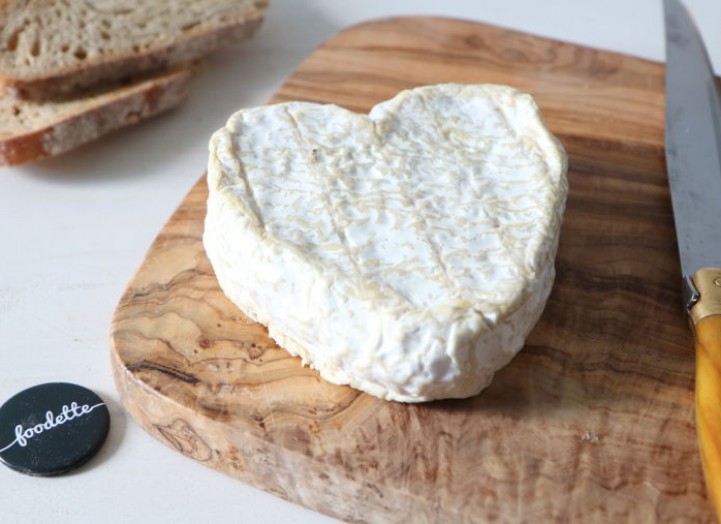
Making Neufchâtel or any other soft cheese at home can be a fun and rewarding process. Here’s a step-by-step guide to help you get started:
Ingredients:
- 1 gallon of cow’s milk (avoid ultra-pasteurized)
- 1/8 teaspoon mesophilic starter culture (MA4002 or MA4003)
- 1/16 teaspoon Penicillium candidum
- 1/16 teaspoon Geotrichum candidum (optional, for a more rustic rind)
- 1/4 teaspoon liquid calcium chloride diluted in 1/4 cup water (only if using store-bought milk)
- 1/4 teaspoon liquid rennet diluted in 1/4 cup water
- Cheese salt to taste
Step-by-step guide:
- Sanitize Your Equipment: Start by sanitizing all your equipment. This includes the pot, thermometer, stirring spoon, and cheese molds. You can do this by boiling them or using a no-rinse sanitizer.
- Warm the Milk: Pour the milk into a large pot and heat it slowly on the stove until it reaches 70°F (21°C). Stir gently as it warms to prevent the milk from scorching.
- Add the Cultures: Sprinkle the mesophilic starter culture, Penicillium candidum, and optional Geotrichum candidum over the surface of the milk and let it rehydrate for 1-2 minutes. Then stir it in gently.
- Add Calcium Chloride and Rennet: If using store-bought milk, add the diluted calcium chloride and mix well. This helps restore the calcium balance of the milk. Next, add the diluted rennet and stir gently in an up-and-down motion for about 1 minute.
- Let the Milk Set: Cover the pot and let it sit undisturbed at room temperature for 12-14 hours. During this time, the milk will coagulate (or set) into a yogurt-like consistency.
- Cut and Drain the Curds: Once the curd has set, cut it into 1-inch cubes with a long knife. Let the curds rest for 5 minutes, then gently stir them. Let them rest again for another 5 minutes, then pour the curds into a colander lined with fine cheesecloth to drain.
- Mold the Cheese: Spoon the drained curds into cheese molds placed over a draining rack. Let the curds drain for another 6-12 hours, or until they reach the desired consistency.
- Salt and Age the Cheese: Remove the cheese from the molds and sprinkle cheese salt on all sides to taste. If you want a bloomy rind like traditional Neufchâtel, place the salted cheeses in a ripening box and age them in your refrigerator for 1-2 weeks.
Adding Flavors
You can add flavors to your Neufchâtel by blending in herbs or spices after the curd has drained but before it’s molded. Dill, chives, garlic, and cracked pepper are all tasty additions.
Please note that cheesemaking is as much an art as it is a science, and it may take a few tries to get your homemade Neufchâtel just right. Enjoy the process and happy cheesemaking!
Also read: The Science of Cheesemaking: A Journey from Milk to Artisanal Delight
Where to buy Neufchâtel?
The History and Origin of Neufchâtel
Neufchâtel cheese is one of the oldest types of cheese in France, with its production believed to date back as far as the 6th century AD, during the time of the Kingdom of the Franks. Its origins can be traced back to a medieval village called Neufchâtel in Normandy.
The first recorded Neufchâtel recipe dates back to the 16th century, found in the Saint-Aman Abbey of Rouen, Upper Normandy. Interestingly, Neufchâtel cheese is also connected with the tradition of heart-shaped cheese, a practice that dates back over 500 years.
It’s noteworthy to mention that this cheese has its roots in the Hundred Years’ War (1337 -1453). The cheese is made from cow’s milk and comes from the Pays de Bray, named after one of the towns in the area.
This soft-ripened, bloomy-rinded cheese made with whole cow’s milk has always remained less well-known than its more popular cousins, yet its history and unique shape have made it a significant part of French gastronomy.
Frequently Asked Questions
1. How do you pronounce Neufchâtel cheese?
The French cheese Neufchâtel is pronounced as “Nuh-fsha-tel”. The “eu” in French is pronounced like the “u” in “put”, and the “â” is pronounced like “ah”. The final “l” is silent. So, it’s “nuh-fsha-tel”.
2. Can I freeze Neufchâtel cheese?
Yes, you can freeze Neufchâtel cheese. Freezing will extend the cheese’s shelf life, but it may alter its texture and taste slightly. After freezing and thawing, the cheese might become more crumbly and less creamy, which makes it less suitable for spreading but still fine for cooking or baking.
To freeze Neufchâtel cheese, wrap it tightly in plastic wrap, then place it in a freezer bag or container. It’s best to use the frozen cheese within two months for optimal quality.
Also read:
- The Ultimate Guide to Queso Blanco: A Taste of Mexico
- All About Roquefort: An Insider’s Guide to the King of Blue Cheese
- Asiago Cheese: An In-depth Exploration of Nutrition and Taste
- The Ultimate Guide to Jarlsberg: Delicious and Nutritious
- Ricotta Guide: All You Need to Know About This Versatile Cheese
- The Ultimate Guide to Chèvre: Exploring Goat Cheese
- The Ultimate Guide to Kasseri: A Taste of Tradition



